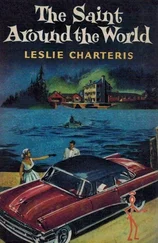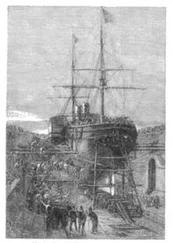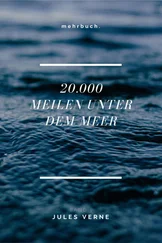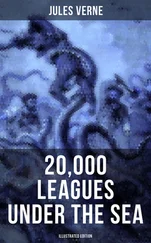“Haven’t seen or heard a thing!” the Canadian replied. “I haven’t even spotted the crew of this boat. By any chance, could they be electric too?”
“Electric?”
“Oh ye gods, I’m half tempted to believe it! But back to you, Professor Aronnax,” Ned Land said, still hanging on to his ideas. “Can’t you tell me how many men are on board? Ten, twenty, fifty, a hundred?”
“I’m unable to answer you, Mr. Land. And trust me on this: for the time being, get rid of these notions of taking over the Nautilus or escaping from it. This boat is a masterpiece of modern technology, and I’d be sorry to have missed it! Many people would welcome the circumstances that have been handed us, just to walk in the midst of these wonders. So keep calm, and let’s see what’s happening around us.”
“See!” the harpooner exclaimed. “There’s nothing to see, nothing we’ll ever see from this sheet-iron prison! We’re simply running around blindfolded—”
Ned Land was just pronouncing these last words when we were suddenly plunged into darkness, utter darkness. The ceiling lights went out so quickly, my eyes literally ached, just as if we had experienced the opposite sensation of going from the deepest gloom to the brightest sunlight.
We stood stock-still, not knowing what surprise was waiting for us, whether pleasant or unpleasant. But a sliding sound became audible. You could tell that some panels were shifting over the Nautilus’s sides.
“It’s the beginning of the end!” Ned Land said.
“… order Hydromedusa,” Conseil muttered.
Suddenly, through two oblong openings, daylight appeared on both sides of the lounge. The liquid masses came into view, brightly lit by the ship’s electric outpourings. We were separated from the sea by two panes of glass. Initially I shuddered at the thought that these fragile partitions could break; but strong copper bands secured them, giving them nearly infinite resistance.
The sea was clearly visible for a one-mile radius around the Nautilus. What a sight! What pen could describe it? Who could portray the effects of this light through these translucent sheets of water, the subtlety of its progressive shadings into the ocean’s upper and lower strata?
The transparency of salt water has long been recognized. Its clarity is believed to exceed that of spring water. The mineral and organic substances it holds in suspension actually increase its translucency. In certain parts of the Caribbean Sea, you can see the sandy bottom with startling distinctness as deep as 145 meters down, and the penetrating power of the sun’s rays seems to give out only at a depth of 300 meters. But in this fluid setting traveled by the Nautilus, our electric glow was being generated in the very heart of the waves. It was no longer illuminated water, it was liquid light.
If we accept the hypotheses of the microbiologist Ehrenberg— who believes that these underwater depths are lit up by phosphorescent organisms—nature has certainly saved one of her most prodigious sights for residents of the sea, and I could judge for myself from the thousandfold play of the light. On both sides I had windows opening over these unexplored depths. The darkness in the lounge enhanced the brightness outside, and we stared as if this clear glass were the window of an immense aquarium.
The Nautilus seemed to be standing still. This was due to the lack of landmarks. But streaks of water, parted by the ship’s spur, sometimes threaded before our eyes with extraordinary speed.
In wonderment, we leaned on our elbows before these show windows, and our stunned silence remained unbroken until Conseil said:
“You wanted to see something, Ned my friend; well, now you have something to see!”
“How unusual!” the Canadian put in, setting aside his tantrums and getaway schemes while submitting to this irresistible allure. “A man would go an even greater distance just to stare at such a sight!”
“Ah!” I exclaimed. “I see our captain’s way of life! He’s found himself a separate world that saves its most astonishing wonders just for him!”
“But where are the fish?” the Canadian ventured to observe. “I don’t see any fish!”
“Why would you care, Ned my friend?” Conseil replied. “Since you have no knowledge of them.”
“Me? A fisherman!” Ned Land exclaimed.
And on this subject a dispute arose between the two friends, since both were knowledgeable about fish, but from totally different standpoints.
Everyone knows that fish make up the fourth and last class in the vertebrate branch. They have been quite aptly defined as: “cold-blooded vertebrates with a double circulatory system, breathing through gills, and designed to live in water.” They consist of two distinct series: the series of bony fish, in other words, those whose spines have vertebrae made of bone; and cartilaginous fish, in other words, those whose spines have vertebrae made of cartilage.
Possibly the Canadian was familiar with this distinction, but Conseil knew far more about it; and since he and Ned were now fast friends, he just had to show off. So he told the harpooner:
“Ned my friend, you’re a slayer of fish, a highly skilled fisherman. You’ve caught a large number of these fascinating animals. But I’ll bet you don’t know how they’re classified.”
“Sure I do,” the harpooner replied in all seriousness. “They’re classified into fish we eat and fish we don’t eat!”
“Spoken like a true glutton,” Conseil replied. “But tell me, are you familiar with the differences between bony fish and cartilaginous fish?”
“Just maybe, Conseil.”
“And how about the subdivisions of these two large classes?”
“I haven’t the foggiest notion,” the Canadian replied.
“All right, listen and learn, Ned my friend! Bony fish are subdivided into six orders. Primo, the acanthopterygians, whose upper jaw is fully formed and free-moving, and whose gills take the shape of a comb. This order consists of fifteen families, in other words, three-quarters of all known fish. Example: the common perch.”
“Pretty fair eating,” Ned Land replied.
“Secundo,” Conseil went on, “the abdominals, whose pelvic fins hang under the abdomen to the rear of the pectorals but aren’t attached to the shoulder bone, an order that’s divided into five families and makes up the great majority of freshwater fish. Examples: carp, pike.”
“Ugh!” the Canadian put in with distinct scorn. “You can keep the freshwater fish!”
“Tertio,” Conseil said, “the subbrachians, whose pelvic fins are attached under the pectorals and hang directly from the shoulder bone. This order contains four families. Examples: flatfish such as sole, turbot, dab, plaice, brill, etc.”
“Excellent, really excellent!” the harpooner exclaimed, interested in fish only from an edible viewpoint.
“Quarto,” Conseil went on, unabashed, “the apods, with long bodies that lack pelvic fins and are covered by a heavy, often glutinous skin, an order consisting of only one family. Examples: common eels and electric eels.”
“So-so, just so-so!” Ned Land replied.
“Quinto,” Conseil said, “the lophobranchians, which have fully formed, free-moving jaws but whose gills consist of little tufts arranged in pairs along their gill arches. This order includes only one family. Examples: seahorses and dragonfish.”
“Bad, very bad!” the harpooner replied.
“Sexto and last,” Conseil said, “the plectognaths, whose maxillary bone is firmly attached to the side of the intermaxillary that forms the jaw, and whose palate arch is locked to the skull by sutures that render the jaw immovable, an order lacking true pelvic fins and which consists of two families. Examples: puffers and moonfish.”
Читать дальше












